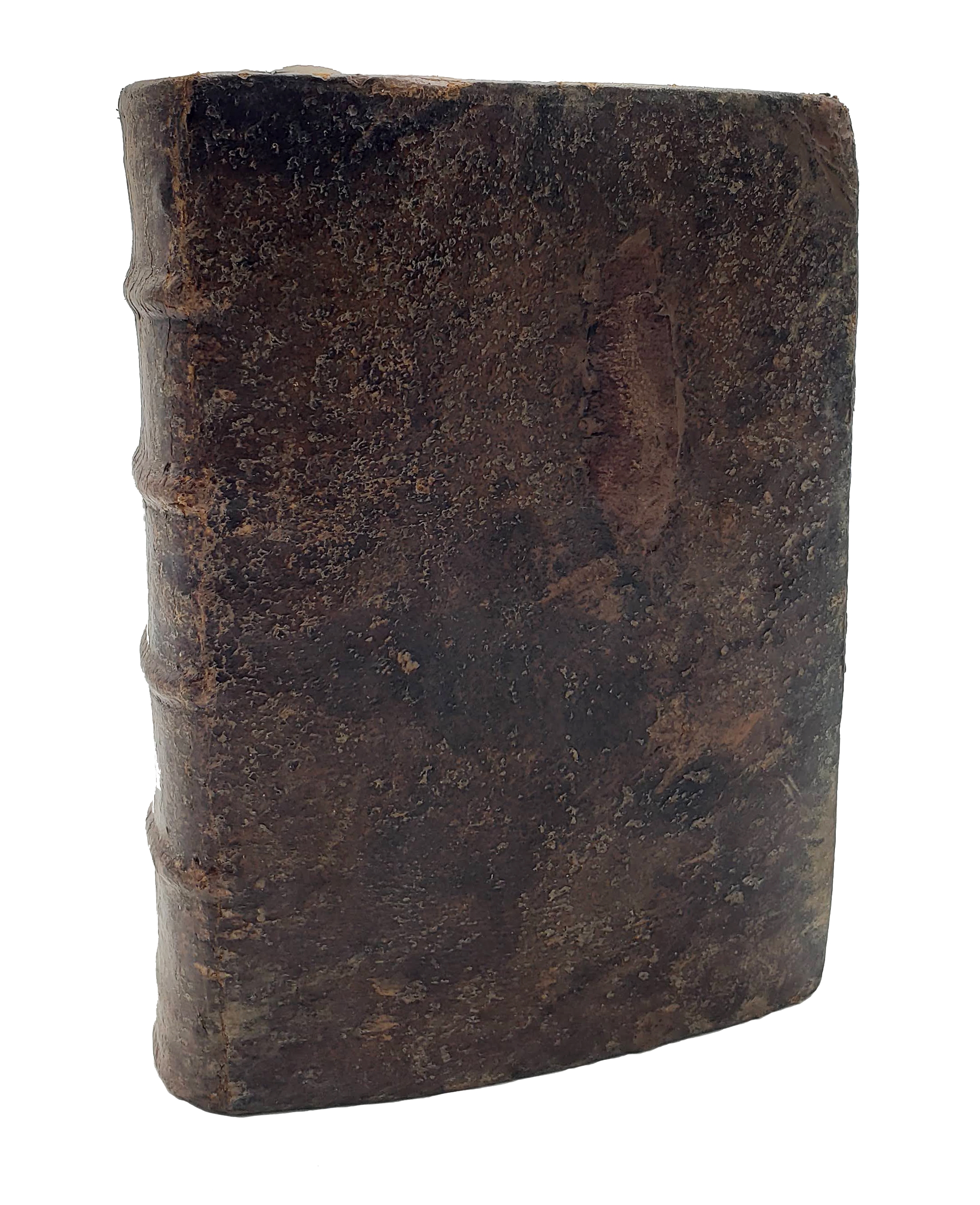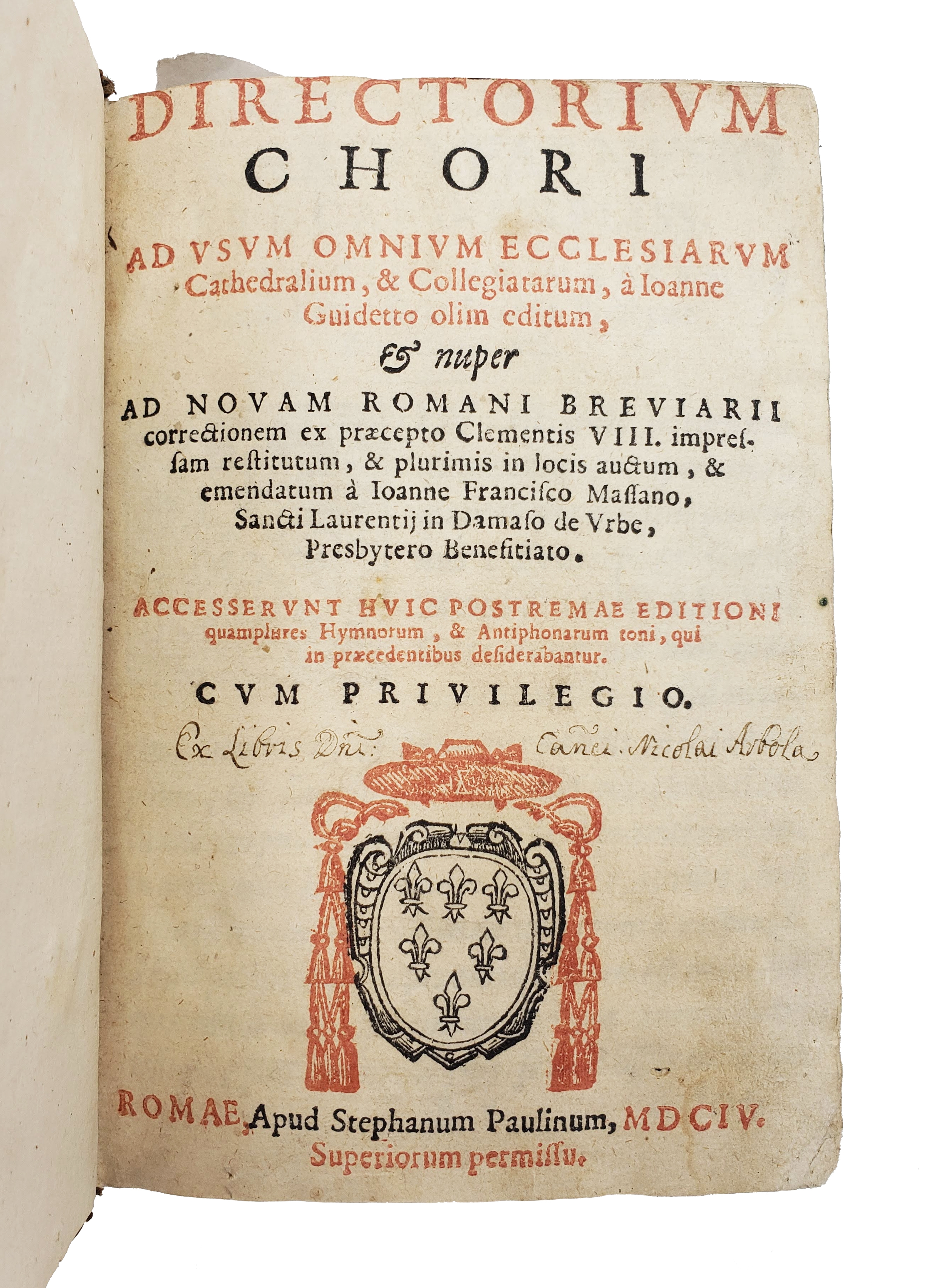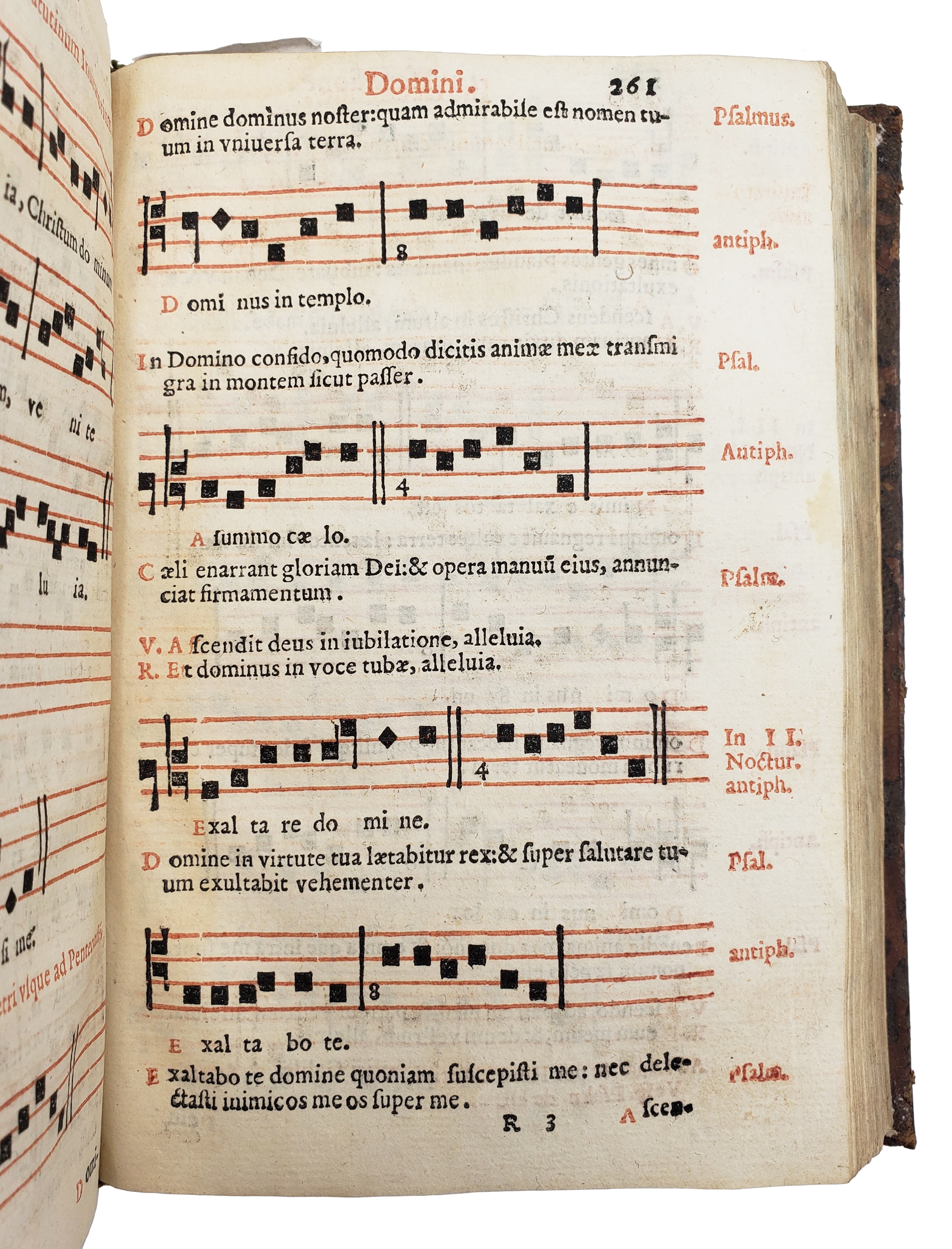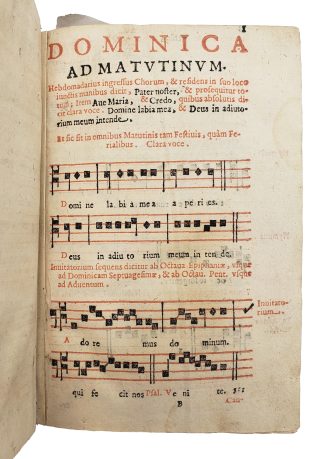GUIDETTI, Giovanni.
NO COPIES IN THE US
Directorium chori.
Rome., Stefano Paolini., 1604.£3,750.00
8vo. pp. [16], 669, [7]. Roman letter, in red and black, approx. 4 to 6 red 4-line staves with black music notation per full page. Title in red and black with arms of Clement VIII, decorated initials and ornaments. Slight age browning, upper edge trimmed short, occasionally touching running title. A good, clean copy in C17 mottled calf, raised bands, wear to upper outer corners and foot of spine, C18 ms ‘Ex Libris D[omi]ni Can[oni]ci Nicolai Arbola’ to title.
The very rare fourth, enlarged edition, unrecorded in USTC, of the first complete plainsong chant manual published after the Council of Trent. Handsomely printed in red and black, it was first published in 1582, and here reprinted according to the revised Roman Breviary issued by Clement VIII. Giovanni Guidetti, of whom little is known, was chaplain to Pope Gregory XIII; he studied with Giovanni Pierluigi da Palestrina, one of the great Renaissance musicians, as mentioned in the preface to ‘Directorium’, on which Palestrina also collaborated. The main goal of the work was ‘to revive Gregorian singing in its pristine purity and free it from the arbitrary additions and alterations then in vogue’ (Grove, p 639). Intended for clerics and all religious,‘Directorium’ comprised the notation and words for the Divine Office, including specific chants for feasts throughout the year, with hymns, responsories, antiphons, and so on, as well as instructions on ritual gestures. ‘Guidetti’s system of notation is famous for its unique note forms, devised to set both accentus and concentus in proportional durations’ (Kim, p.152), which however never caught on in the world of printed music. They are absent in this edition, substituted by traditional plainchant notation. In the preface, the editor, J.F. Massano, ‘justified the changed notation by mentioning the absence of such marks in other ancient and learned precedents’, on which Guidetti claimed to have relied; yet, ‘it may also be the case that the printer did not have access to Granjon’s type’, as used in previous editions. (Swanson, p.97). An important, handsomely printed source for the development of early modern plainchant.
Nicola Arbola was probably the choral chaplain of S. Maria Maggiore in Vercelli, Piedmont, recorded c.1780.
No copies recorded in the US. Not in USTC. Hyun-An Kim, Humanism and the Reform of Sacred Music in Early Modern England (2016); B. Swanson, ‘Printing Reformed Plainchant in Papal Rome’, in Early Modern Catholicism and the Printed Book, ed. M. Komorowska et al. (2024), pp.75-100.In stock






